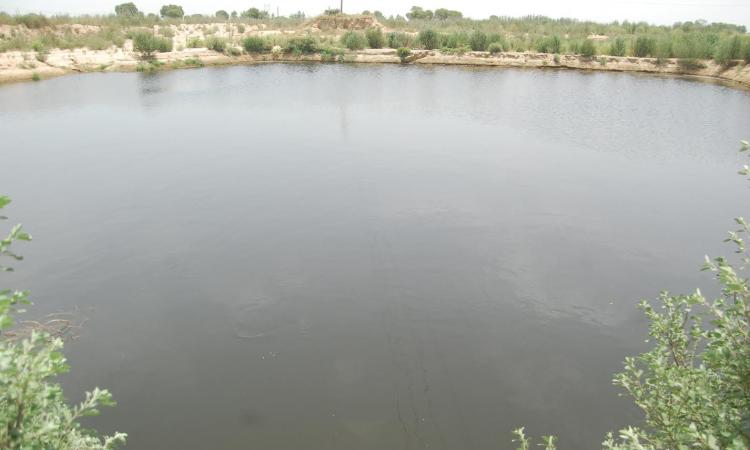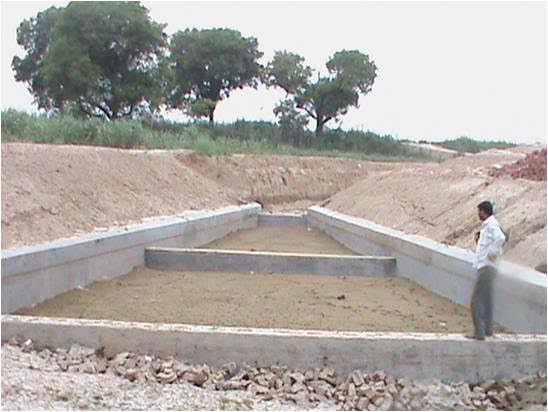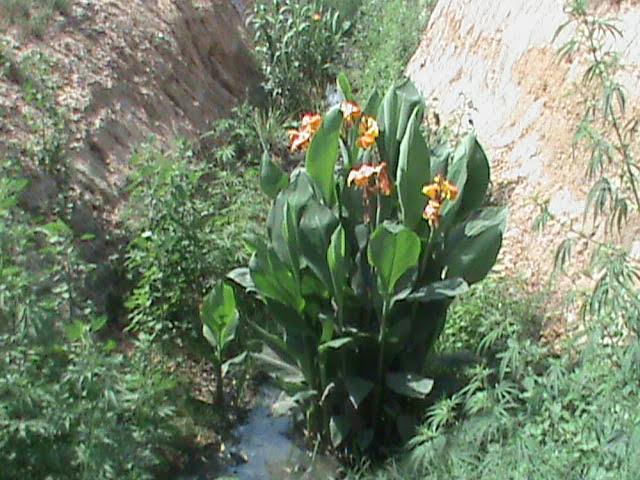
Located in Uttar Pradesh’s Baghpat district, with vast agricultural fields growing sugarcane, rice, wheat, jowar, chana and all kinds of seasonal vegetables, Dhikoli in Pilana tehsil comes across as a bustling and prosperous village. Barely an hour-long car ride from New Delhi, it is home to 15000-odd inhabitants, mostly of the Jat community. Spread over a geographical area of 654 hectares, the village’s edge is ringed with 10 ponds (locally referred to as johads) which once charged the shallow wells—the source of drinking water for the villagers. Abandoned for over three decades now, these ponds have become tanks which store the village’s domestic sewage. The stinking, black water stored year-round in these ponds are a cause of serious health problems for villagers and livestock.
“Most villages in western UP are beneficiaries of the green revolution and face a similar situation as witnessed in Dhikoli,” says M.S. Vani, trustee and director, Natural Resources and Governance Program at DCAP (Development Centre for Alternative Policies), a New Delhi-based NGO working in Uttar Pradesh and Uttarakhand. “Five out of six blocks of Baghpat district were declared dark zones by the Central Ground Water Board due to excessive groundwater exploitation, as far back as 2001.”
Reversal of gains
Environmentally unsustainable agricultural practices--the use of hybrid seeds, indiscriminate use of chemicals as fertilisers and pesticides along with high levels of water consumption in the region--have led to excessive groundwater withdrawals.
Earlier, the village ponds in the entire region used to get filled up during monsoon, retaining water throughout winter and early summer and recharging groundwater before it dries late summer. Then, scores of villages in Baghpat district including Dhikoli harvested four crops a year, the village elders inform. But now, if one is able to acquire even two crops a year, he is considered privileged. Two decades ago, one could find water at a depth of 10 ft but it has now plummeted to 100 ft or more.
As the villagers became affluent, ponds and wells were abandoned and borewells sprung up in every household; interestingly these borewells are located close to the toilets. Presently, the 1600 households in Dhikoli boast of owning around 600-odd borewells, including the ones meant for irrigation. Since the villagers have adopted toilet-type sanitation and possess borewells, the ponds, overflowing with sewage from domestic tanks, do not dry even in summer. It’s unlikely to find a household which has not been a victim of a mosquito-borne ailment or taken ill due to fecal contamination of water. Incidents of diarrhoea among cattle calves (as reported by government veterinary hospitals in the districts) were rampant and a cause for concern, according to Asian Journal of Animal and Veterinary Advances (2012).
Restoration efforts begin


In 2013, DCAP, with funds provided by Bharat Petroleum Corporation Limited, initiated restoration of surface water bodies and groundwater recharge. The project included restoring dry ponds as well as treating sewage water using the reed-bed system before capturing the water in ponds.
The technical consultant to the project was Mumbai-based Dr Ajit Gokhale. Botanist by education, Gokhale has executed scores of projects involving sewage/effluent treatment, rainwater harvesting, and surface water replenishment. His rainwater harvesting projects in Maharashtra have made 125 drought-prone villages self-reliant in drinking water through the year. Besides, he has also helped NGOs in Dausa and Bharatpur conserve water by reviving their ponds. Among the corporate clients who have benefitted from his reed-based system include Training Ship Rehman (Uran), Symbiosis Knowledge Village (Pune), JSW Industries (Mumbai), Oneness University (Andhra Pradesh), Essel World (Mumbai), Gujarat Informatics Limited (Gandhi Nagar) and others. “With no sewerage system in place, the ponds in Dhikoli, like other villages in Baghpat, have been burdened with overflowing domestic sewage dirtying the surroundings and harming the soil in the long run. At the same time, the borewells were getting deeper as the water table has lowered due to excess withdrawal of groundwater,” says Gokhale.
The sewage from the ponds abutting the village flowed along the stormwater channels and ultimately into the agricultural fields and from there into groundwater reservoirs. It was decided to capture the sewage water for treatment in a reed-bed system and collect the treated water in the two newly-made ponds in the village shamshan (crematorium) area.
As DCAP wanted to involve the villagers in the project, it began with the restoration of a dry temple pond called Baba Bhurewala johad which the villagers helped clean. Here, historically, as the pond beds had clayey soil, seepage of johad water into the ground was not possible. The villagers removed the bed soil which was used to repair their homes, exposing lower levels of sandy soil. This resulted in the rapid seepage of rainwater into the ground. Thus the pond did not hold any water even during the rains.
To address the issue of water pollution due to household sewage and wastewater, a wastewater treatment system was laid using natural solutions. Using earthmovers and shramdan (voluntary labour) provided by the locals, two ponds, spread on a half-acre plot, were built at the shamshan grounds. “During June to September, Dhikoli receives around 340 mm of rainfall which this upper johad will retain,” says Gokhale. “This would not only be an additional source of water for the village but will also help recharge the groundwater and neighbouring borewells.”
Reed-bed system begins to work
A 650-ft long channel—8ft deep and 10 ft wide—with weirs that had alternating tiny waterfalls and ditches brought the sewage water and rainwater overflow from the village drain to the lower johad. The villagers planted the reed-bed with over 4,500 saplings of water cleaning plants, like canna, colocasia, alocasia, commelina, crinum, and others. Within months, the overflowing sewage which was once an eyesore became a sight to behold with the blooming plants covering the reed-bed stretch.
The reed-bed system, also known as the biofilter system, is constructed on wetland systems and employs three types of microbes--anaerobic, facultative and aerobic bacteria--working alongside the natural environment.
Explains Gokhale, “Ours, is an in-situ treatment which is done within the stream and an intelligent management of the water course. In this, we do not use energy for aeration. Semi-skilled manpower takes care of maintenance and, most importantly, rejuvenates the ecosystems at minimal costs.”
The restoration of Baba Bhurewala johad, the building of two shamshan johads and the construction of the wastewater treatment system cost Rs 28 lakh in all. It has been two years since the project was completed and the three johads have been able to capture around 55 lakh litres of rainwater from thesurrounding catchments per year, recharging the groundwater in the process. In addition, every year, 109 lakh litres of treated wastewater goes into the newly made big shamshan johad. Several tube wells downstream of the johads have also reported an increase in the water table.